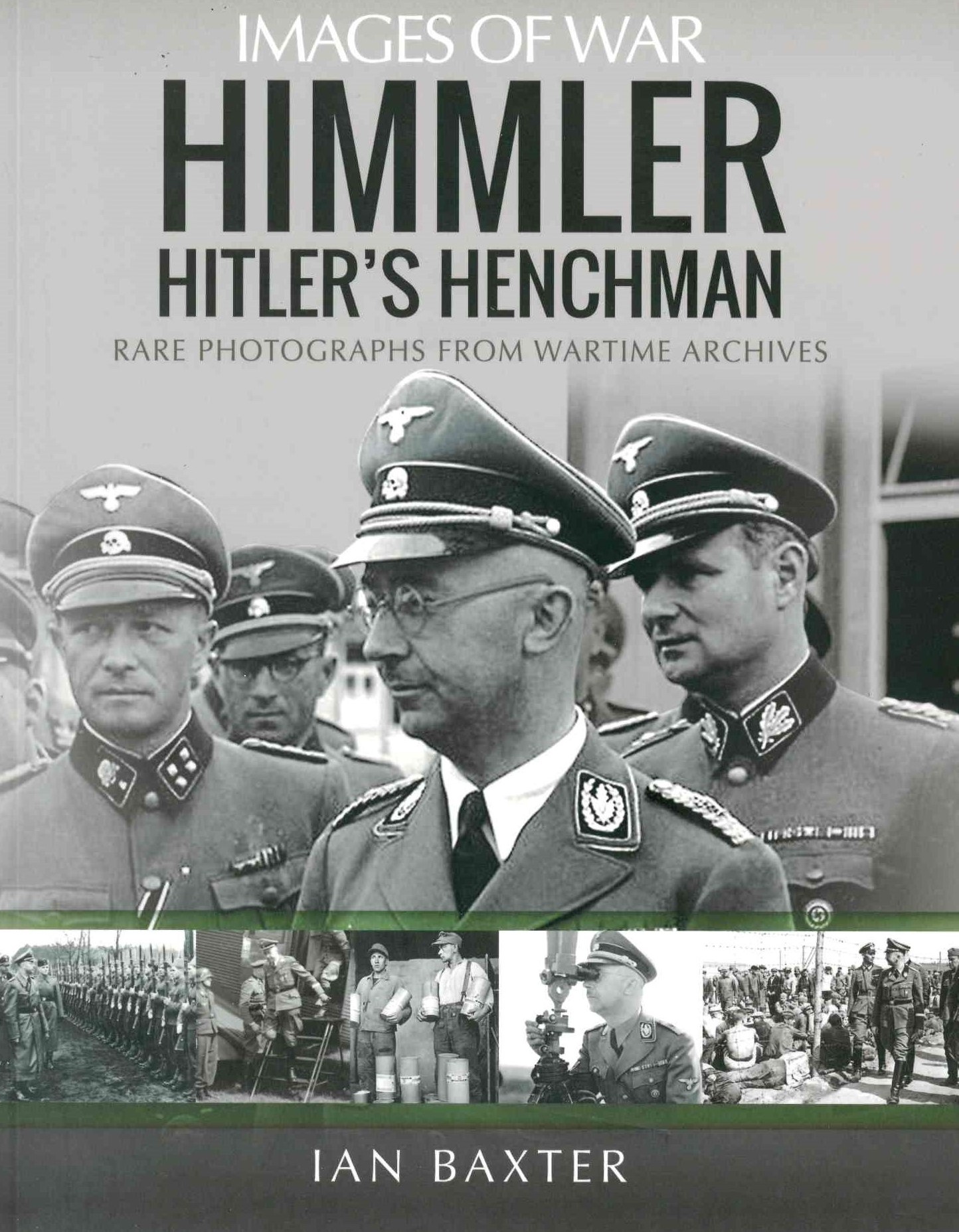Himmler: Hitler’s Henchman
Ian Baxter is a prolific author and has an impressive collection of photographs, many unpublished previously. The book follows the familiar Images of War format with brief introductions for each chapter followed by a lot of photographs to tell the story. At first, I was hesitant to review this book as a lot has been written about this period of well-documented evil that was the Nazi era. However, I wanted to read and see Ian Baxter’s perspective on Heinrich Himmler, the Architect of the Holocaust.
Ian Baxter did not disappoint, and his opening paragraph sums up the book,
“Heinrich Himmler, a bespectacled former chicken farmer, joined The Nazi Party (NSDAP) in August 1923, receiving party number 14303. That same year he joined the Schutzstaffel (SS) or Guard Detachment, as an SS-Führer (SS Leader). The SS was initially part of the much larger SA (Sturmabteilung) or Storm Troopers and was formed in 1923 for Hitler’s personal protection. By 1925 it was re-formed as an elite unit of the SA. Himmler’s first leadership position in the SS was district leader (SS-Gauführer). Over the next couple of years Himmler excelled in the realms of the SS but required a position of strong control and freedom of action to expand what he saw as a ‘new SS order’. In September 1927, Himmler told Hitler of his idea to expand the SS into a faithful, controlling, racially-pure elite unit. His Führer welcomed the vision and soon appointed him Deputy Reichsführer-SS.”
Himmler: Hitler’s Henchman is composed of an introduction and three chapters:
- Chapter One: Invasion of the East, 1939-1941
- Chapter Two: Architect of Genocide: Racial Policy, 1941-42
- Chapter Three: War Lord, 1943-45
After a summary of the chapter to come, there follows a plethora of photographs, most of which are official party photographs of Himmler interacting with other party officials. Only the most ardent of people with an understanding of the NDSAP would find nothing of new interest in this book; however, there is some very detailed information that gives more depth into the background of Himmler. For example, the first chapter dealing with the invasion of the East had fascinating information on how the Reichsführer and Reinhard Heydrich scouted Upper Silesia and devised a cunning simulated Polish attack on German troops, complete with concentration camp prisoners forced into the role with Polish uniforms.
Ian Baxter again proves his amazing ability to succinctly make complex history into an easy to understand, compact chapter. There is a lot to take in as Ian leads readers into the fanatical mind of a leader who was always finding more efficient ways of killing his enemies. More impressive is how he, and other Nazi leaders, indoctrinated their followers to kill without moral reservations. This is highlighted in the second chapter with grandiose plans of efficient concentration camps which Himmler wanted to create new agricultural utopias supporting the German Lebensraum (the territory that Germany believed it needed for its natural development). Auschwitz was created with that goal in mind that prisoners could build the necessary infrastructure for Germans to later occupy.
Himmler was a man of conflictions. He had the mission of expanding the Waffen-SS as their fanaticism was used to great effect at “Hitler’s fire brigade” plugging holes in the Russian’s relentless advances. The last two years of the war, Himmler had to go against his own policies and beliefs and recruit foreign soldiers, thousands of Hitler Youth, and created the Volkssturm (conscripted German men between 16 and 60 who were not already serving in a military unit). Of the 38 divisions of the Waffen-SS, only about 12 of the divisions were considered truly elite.
For modelers, the third chapter provides the most photographs of armor, anti-tank cannons and troops in the field. The photographs also show the desperation of the Nazi war machine with young, old, and foreign soldiers. There are a lot of photos of Himmler with foreign-recruited divisions, with the soldiers present probably not realizing that they were just fodder to blunt the Russian attacks.
The epilogue sums up the end of the Himmler’s days when he was captured by the British in civilian clothes. After finally admitting who he was, “the interrogators were surprised by how ordinary he was. They expected to see some type of monster, but instead they were confronted by a man that seemed quiet, yet at the same time appeared emotionally detached and profoundly repressed”. Himmler soon committed suicide with a hidden potassium cyanide pill. “In front of his staff and aids he was a colourless and humourless administrator of mass murder who sealed the fate of millions from behind a desk. He was undoubtedly a willing accomplice to genocide but was too cowardly to stand trial for his actions and thus avoided the hangman’s noose.”
I am an unashamed fan of Ian Baxter’s work. His writing style makes complex issues easy to understand and informative. Ian’s use of photos to support the text is amazing and there is a lot to take in. I highly recommend this book despite the dark topic it covers. However, in the words of another astute and studied Brit, Winston Churchill, “Those that fail to learn from history are doomed to repeat it.”
Profuse thanks to Casemate and IPMS/USA for providing the review sample.












Comments
Add new comment
This site is protected by reCAPTCHA and the Google Privacy Policy and Terms of Service apply.
Similar Reviews